Opinion
OPINION: Some Councillors made passionate pleas for raises. Did they make their case? You tell me.

The opinions expressed in this article are solely those of the writer and should not be interpreted as reflecting the editorial policy of Todayville, Inc.
The city of Red Deer just went through a sad episode in municipal politics. March 2017 the federal government announced the end of a subsidy for politicians, for January 1 2019. Til now politicians did not have to pay taxes on 1/3 of their earnings. Which could add up over time.
Rather than discuss it in advance, determine a proper way to deal with the end of a subsidy or determine a proper compensation package for the mayor and city councillors, they waited til the 11th hour, after they have been elected or re-elected, as in the majority of cases.
One councillor talked about working 10 hours a day everyday of the year, so he deserves a raise to $68,618.16 /yr. giving him an earning of $18.80 /hr for his 10 hours a day everyday. Kind of unbelievable that our councillors work 10 hours a day, everyday, with no days off, no holidays, etc.
Another councillor, said we should be grateful to have such great people on council, so grateful that we should give them raises to cover the end of their tax subsidy. Why this council brought us such events as the CFR and the Winter Games but he failed to mention other issues that became famous under his watch.
Red Deer never recovered from the last recession and is experiencing a continued downturn, while neighbouring communities continue to grow following the provincial growth rate of 4% annually.
Remember these stories:
Alberta on track to have worst air quality in Canada
Red Deer has worst pollution in province, while 4 other regions close to exceeding national standards
Alberta Environment Minister Shannon Phillips says the province is on track to have the worst air quality in Canada, and vows the government will put measures in place to reduce emissions from industry and vehicles.
“The time to act is long overdue,” Phillips said.
“We have a responsibility to do everything we can to protect the health of Albertans.”
Phillips made the remarks after seeing the results of the Canadian Ambient Air Quality Standards report, which show the Red Deer region has exceeded national standards. Four other regions — Lower Athabasca, Upper Athabasca, North Saskatchewan and South Saskatchewan — are close to exceeding national standards.
Phillips said there is no immediate health risk for people living in central Alberta.
“These results are concerning,” Phillips said in a news release. “We can’t keep going down the same path and expecting a different result. Our government has a responsibility to protect the health of Albertans by ensuring air pollution from all sources is addressed.”
The province will initiate an “action plan” to deal with poor air quality in the Red Deer area, a move she said is required under the Canadian Ambient Air Quality Standards.
Red Deer has one of the highest crime rate in the country
According to the local newspaper, The Red Deer Advocate, our fine city has some serious crime issues, compared to other major cities in Alberta. Following are sections of the story:
“Red Deer’s Crime Severity Index (CSI) is higher than Alberta’s other four major cities, recently released Statistics Canada information reveals.”
“The Crime Severity Index measures the volume and severity of crimes reported to police and is standardized, using the number 100 as the base, for the year 2006. It is calculated using all Criminal Code violations including offences like stolen vehicles, traffic and drug violations, and federal statutes”
“According to Statistics Canada, the overall CSI for 2015 for Red Deer is 182 (numbers have been rounded off).”
“This compares with Edmonton at 112, Lethbridge at 109, and Calgary and Medicine Hat both at 77. Alberta’s CSI is 102 and Canada overall is 70.”
“When looking specifically at violent crime, Statistics Canada shows that index for Red Deer up by almost 24 per cent (146 in 2015 from 118 in 2014). It had actually declined each year from 2012 to 2014, before increasing. There were no homicides in 2014. There were two in 2015.”
Red Deer’s population peaked in 2015 and declined in 2016
City council will be talking about growth and managing it. Let us look at the growth during the last mandate 2013-2017. The last census was done in 2016 and showed a decrease since 2015. (99,832 from 100,807) The decision was made to cancel the 2017 census since there was no sign of growth and you needed growth to justify the cost of the census.
Population of Red Deer in 2016 was 99,832 a increase of 2,723 or 2.8%over 97,109 in 2013. Not that great on the face of things, but looking deeper and you realize some neighbourhoods did not even fare that well.
For example;
Kentwood 2016=4,267 2013=4,280
Glendale 2016=4,288 2013=4,393
Normandeau 2016=3,530 2013=3,565
Pines 2016=1,718 2013=1,823
Highland Green 2016=3,920 2013=3,979
Oriole Park 2016=5,244 2013=5,308
Riverside Meadows 2016=3,686 2013=3,665
Fairview 2016=710 2013=770
Johnstone Park 2016=3,865 2013=3760
Total 2016=31,228 2013=31,543
Percentage of population 2016=31.3% 2013= 32.5%
Red Deer City Population 2016=99,832 2013=97,109
In case you did not know these are the neighbourhoods north of the river. So while the city grew for 3 of 4 years in the end it still grew over 4 years ago. The city shrank in total from 100,807 in 2015 to 99,832 in 2016. These neighbourhoods, except for Johnstone Park which grew by 105 and Riverside Meadows which grew by 21, shrank in size over the four years.
So I ask the incumbents to offer measures to stem the outward migration and encourage growth. Anyone? Perhaps build a north side Collicutt Centre? A high school?
The facts are there on reddeer.ca for anyone to study.
Did they make their case. Are they the saviours of Red Deer or not?
?
Opinion
Hell freezes over, CTV’s fabrication of fake news and our 2026 forecast is still searching for sunshine

Plus! Politico warns that the far right’s stealing Christmas, a CBC content analysis ruffles feathers and more! Happy New Year
Last week, according to the people who produce the nation’s most popular newscast, the hell that is Gaza froze over.
That’s right. According to CTV News, “freezing” rain flooded Gaza camps, leaving “displaced Palestinians in dire conditions.” This, as was pointed out by social media critics (including the National Post’s Chris Selley) was an absolutely false statement. It was, to be clear, a lie.
The Rewrite is a dedicated to saving journalism from its worst instincts.
Please support us with a free or paid subscription
Winter rains had indeed fallen and made life unpleasant for people in Gaza. But the Associated Press (AP) report for which some eager beaver wrote the headline (one is tempted to suspect either a social justice warrior posing as a journalist or a bumbling incompetent produced by J-school) made no mention of anything “freezing.” Of course it didn’t, because on the day the story was published the high temperature in Gaza was 17C with a low of 13C.
Now, as one who has visited Disneyland in January, I am aware that temperatures can be relative. When it’s 14C in southern California, people from Saskatoon and Winnipeg are jumping into the local hotel pools while “cast members” at Disneyland are wearing toques and mittens. So AP was entirely within its rights to refer to conditions as chilly.
CTV Evening News, historically, has been one of Canada’s most watched regularly scheduled programs. It has boasted in the past about being the nation’s “most trusted” newscast.
So it was bad enough that CTV posted a barefaced falsehood. What was worse, although it did soften its internal headline to refer to “winter” rains, was that it did not take down its “freezing” posts or offer any hint of regret – at least none I could find – that it had ever posted information that amounted to the antithesis of journalism’s first obligation – The Truth.
While CTV’s owner, Bell, continues to lobby for its newsrooms to qualify for government subsidies such as the Journalism Labour Tax Credit and campaign in Canadian Radio-television and Telecommunications Commission (CRTC) hearings for newsroom funding, it does not appear super interested in investing in good journalism or even maintaining public trust in it.
Which is a shame, because last week its presentation of fake news did significant harm to trust in the craft and was inconsistent with its published standards.
Peter Stockland did a fine job the other day in addressing the fuss raised in media concerning CBS editor-in-chief Bari Weiss’s decision to pull back a story regarding US deportees because, she said, it wasn’t complete enough for airing on 60 Minutes. Others viewed it more suspiciously.
If you haven’t read it yet, please do. We’ll see how it all turns out but what caught my eye was the manner in which the Globe and Mail’s U.S. correspondent, Adrian Morrow, chose to describe Weiss. He portrayed her only as “an anti-woke media personality” – a term of which his editors apparently approved. Given that Weiss was the Opinion Editor of the Wall Street Journal and then the New York Times, this seems a little, shall we say, catty? A childishly nasty manner in which to refer to Weiss, I thought, considering she also launched an online publication – The Free Press – that, because she was good at being an editor, used talented journalists and paid them well, recently sold to Paramount Skydance for more than $200 million.
Most of all, though, I found the reference entirely unnecessary and self-indulgent, as if the piece was written for the approval of peers and not for the benefit of readers.
Unsubstantiated references to the “far right” continue to be in prolific use as we begin a New Year, still searching for reasons to be optimistic about the state of journalism. References to the “far left,” meanwhile, continue to defy Newton’s Third Law of Motion concerning equal and opposite actions.
The European edition of Politico used no less an occasion that the birth of the previous millenium’s most influential figure to weigh in with its report on “How the far right stole Christmas.”
“U.S. President Donald Trump claims to have “brought back” the phrase “Merry Christmas” in the United States,” Politico declared, “framing it as defiance against political correctness. Now, European far-right parties more usually focused on immigration or law-and-order concerns have adopted similar language, recasting Christmas as the latest battleground in a broader struggle over culture.”
Whew. Politico, focusing on Italian leader Giorgia Meloni, went so far as to quote attendees at a Christmas celebration who wished to remain anonymous for fear of being associated with a “far right” event.
Me? I thought it was Karl Marx, father of the far left, who labeled religion the “opium of the masses” and a human creation designed to keep the working classes oppressed. And weren’t the Soviet Union, China, North Korea and other Communist states the ones that did and do their level best to “steal” Christmas and other festivities founded in faith? Times have clearly changed, even if some newsroom instincts have not.
Speaking of disconnected media, prolific numbers man David Clinton has ruffled a few feathers with an extensive analysis in his Substack platform, The Audit, of CBC content. Here’s his summary of what he found:
“Of the 300 stories covered by my data, around 30 per cent – month after month – focused on Donald Trump and U.S.- Canada relations. Another 12-15 percent related to Gaza and the Israel-Palestine conflict. Domestic politics – including election coverage – took up another 12 percent, Indigenous issues attracted 9 percent, climate and the environment grabbed 8 percent, and gender identity, health-care worker assaults, immigrant suffering, and crime attracted around 4 percent each.”
Clinton provides a list of topics that were not “meaningfully represented in my sample of CBC’s Top Stories.” It includes housing affordability, immigration levels, crime rate, private sector investment success stories, the oil and gas sector, Chinese interference, etc. You can read his full analysis here.
You can also look for my New Year’s predictions on media that (spoiler alert) states that seeing as there has been no evidence of reform in CBC President Marie-Philippe Bouchard’s first year at the helm of the Mother Corp, you can expect more of the same nothing in 2026. That piece is expected to appear in The Hub this week.
Western Standard announced before Christmas that it’s heading East and hiring a reporter to cover news emanating from Queen’s Park, Ontario’s provincial legislature.
The most notable media-on-media smackdown that came to my attention over the festive season goes to the reliably rambunctious Ezra Levant of Rebel News.
Seizing on a year-end column by the Globe and Mail’s Lawrence Martin that hailed 2025 “as one of Canada’s great nation-building years” under Prime Minister Mark Carney, Levant had this to say:
|
And that, for this week, is that. Welcome to 2026.
(Peter Menzies is a commentator and consultant on media, Macdonald-Laurier Institute Senior Fellow, a past publisher of the Calgary Herald, a former vice chair of the CRTC and a National Newspaper Award winner.)
Invite your friends and earn rewards
Business
Virtue-signalling devotion to reconciliation will not end well
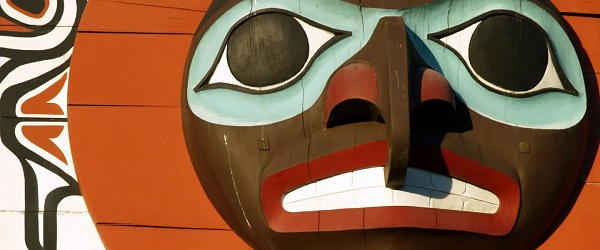
From the Fraser Institute
By Bruce Pardy
In September, the British Columbia Supreme Court threw private property into turmoil. Aboriginal title in Richmond, a suburb of Vancouver, is “prior and senior” to fee simple interests, the court said. That means it trumps the property you have in your house, farm or factory. If the decision holds up on appeal, it would mean private property is not secure anywhere a claim for Aboriginal title is made out.
If you thought things couldn’t get worse, you thought wrong. On Dec. 5, the B.C. Court of Appeal delivered a different kind of upheaval. Gitxaala and Ehattesaht First Nations claimed that B.C.’s mining regime was unlawful because it allowed miners to register claims on Crown land without consulting with them. In a 2-to-1 split decision, the court agreed. The mining permitting regime is inconsistent with the United Nations Declaration on the Rights of Indigenous People (UNDRIP). And B.C. legislation, the court said, has made UNDRIP the law of B.C.
UNDRIP is a declaration of the United Nations General Assembly. It consists of pages and pages of Indigenous rights and entitlements. If UNDRIP is the law in B.C., then Indigenous peoples are entitled to everything—and to have other people pay for it. If you suspect that is an exaggeration, take a spin through UNDRIP for yourself.
Indigenous peoples, it says, “have the right to the lands, territories and resources which they have traditionally owned, occupied or otherwise used or acquired… to own, use, develop and control, as well as the right to “redress” for these lands, through either “restitution” or “just, fair and equitable compensation.” It says that states “shall consult and cooperate in good faith” in order to “obtain free and informed consent prior to the approval of any project affecting their lands or territories and other resources,” and that they have the right to “autonomy or self-government in matters relating to their internal and local affairs, as well as ways and means for financing their autonomous functions.”
The General Assembly adopted UNDRIP in 2007. At the time, Canada sensibly voted “no,” along with New Zealand, the United States and Australia. Eleven countries abstained. But in 2016, the newly elected Trudeau government reversed Canada’s objection.
UN General Assembly resolutions are not binding in international law. Nor are they enforceable in Canadian courts. But in 2019, NDP Premier John Horgan and his Attorney General David Eby, now the Premier, introduced Bill 41, the Declaration on the Rights of Indigenous Peoples Act (DRIPA). DRIPA proposed to require the B.C. government to “take all measures necessary to ensure the laws of British Columbia are consistent with the Declaration.” The B.C. Legislature unanimously passed the bill. (The Canadian Parliament passed a similar bill in 2021.)
Two years later, the legislature passed an amendment to the B.C. Interpretation Act. Eby, still B.C.’s Attorney General, sponsored the bill. The amendment read, “Every Act and regulation must be construed as being consistent with the Declaration.”
Eby has expressed dismay about the Court of Appeal decision. It “invites further and endless litigation,” he said. “It looked at the clear statements of intent in the legislature and the law, and yet reached dramatically different conclusions about what legislators did when we voted unanimously across party lines” to pass DRIPA. He has promised to amend the legislation.
These are crocodile tears. The majority judgment from the Court of Appeal is not a rogue decision from activist judges making things up and ignoring the law. Not this time, anyway. The court said that B.C. law must be construed as being consistent with UNDRIP—which is what Eby’s 2021 amendment to the Interpretation Act says.
In fact, Eby’s government has been doing everything in its power to champion Aboriginal interests. DRIPA is its mandate. It’s been making covert agreements with specific Aboriginal groups over specific territories. These agreements promise Aboriginal title and/or grant Aboriginal management rights over land use. In April 2024, an agreement with the Haida Council recognized Haida title and jurisdiction over Haida Gwaii, an archipelago off the B.C. coast formerly known as the Queen Charlotte Islands. Eby has said that the agreement is a template for what’s possible “in other places in British Columbia, and also in Canada.” He is putting title and control of B.C. into Aboriginal hands.
But it’s not just David Eby. The Richmond decision from the B.C. Supreme Court had nothing to do with B.C. legislation. It was a predictable result of years of Supreme Court of Canada (SCC) jurisprudence under Section 35 of the Constitution. That section guarantees “existing” Aboriginal and treaty rights as of 1982. But the SCC has since championed, evolved and enlarged those rights. Legislatures can fix their own statutes, but they cannot amend Section 35 or override judicial interpretation, even using the “notwithstanding clause.”
Meanwhile, on yet another track, Aboriginal rights are expanding under the Charter of Rights and Freedoms. On the same day as the B.C. Court of Appeal decision on UNDRIP, the Federal Court released two judgments. The federal government has an actionable duty to Aboriginal groups to provide housing and drinking water, the court declared. Taxpayer funded, of course.
One week later, at the other end of the country, the New Brunswick Court of Appeal weighed in. In a claim made by Wolastoqey First Nation for the western half of the province, the court said that Aboriginal title should not displace fee simple title of private owners. Yet it confirmed that a successful claim would require compensation in lieu of land. Private property owners or taxpayers, take your pick.
Like the proverb says, make yourself into a doormat and someone will walk all over you. Obsequious devotion to reconciliation has become a pathology of Canadian character. It won’t end well.
-
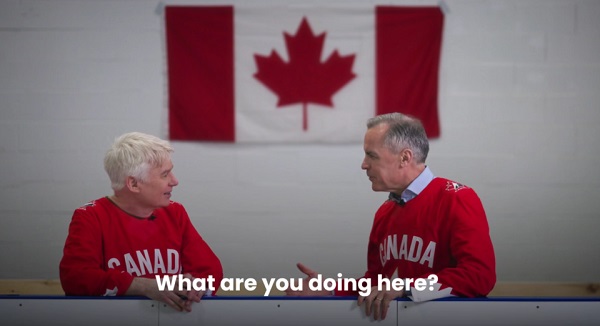
 Bruce Dowbiggin2 days ago
Bruce Dowbiggin2 days agoThe Rise Of The System Engineer: Has Canada Got A Prayer in 2026?
-

 International1 day ago
International1 day ago“Captured and flown out”: Trump announces dramatic capture of Maduro
-

 International1 day ago
International1 day agoTrump Says U.S. Strike Captured Nicolás Maduro and Wife Cilia Flores; Bondi Says Couple Possessed Machine Guns
-

 Energy21 hours ago
Energy21 hours agoThe U.S. Just Removed a Dictator and Canada is Collateral Damage
-
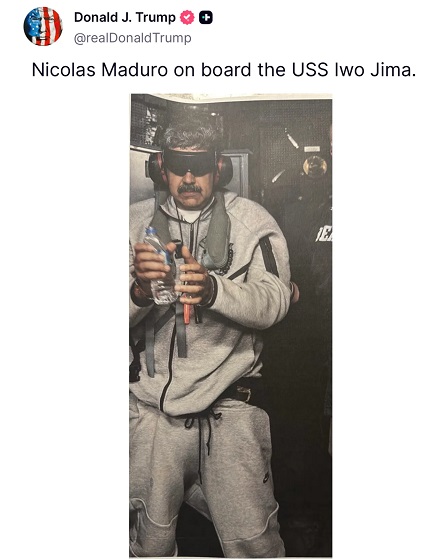
 International21 hours ago
International21 hours agoUS Justice Department Accusing Maduro’s Inner Circle of a Narco-State Conspiracy
-

 Haultain Research18 hours ago
Haultain Research18 hours agoTrying to Defend Maduro’s Legitimacy
-
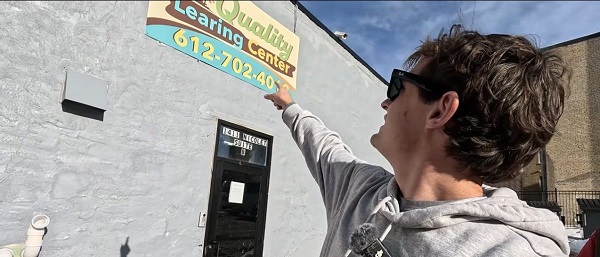
 Business1 day ago
Business1 day agoVacant Somali Daycares In Viral Videos Are Also Linked To $300 Million ‘Feeding Our Future’ Fraud
-
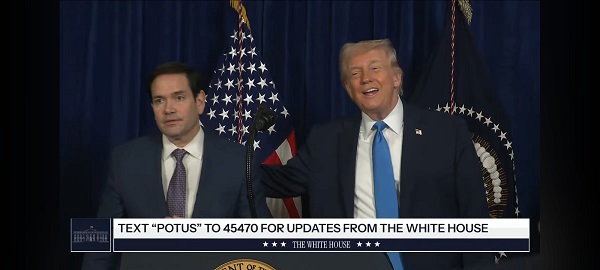
 Daily Caller9 hours ago
Daily Caller9 hours agoTrump Says US Going To Run Venezuela After Nabbing Maduro








